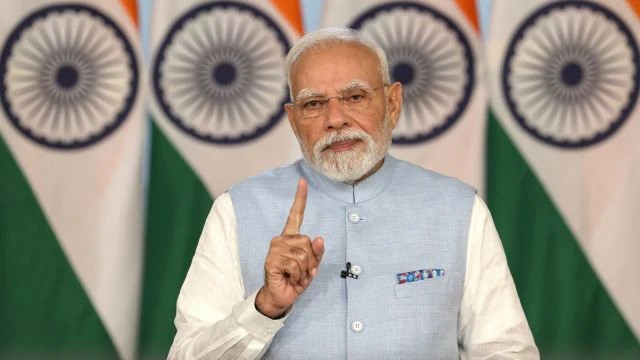
GST Bachat Utsav begins with Navratri, double bonanza for people: PM Modi

 :
| Updated On: 22-Sep-2025 @ 12:27 pm
:
| Updated On: 22-Sep-2025 @ 12:27 pmSHARE
Prime Minister Narendra Modi announced the launch of the “GST Bachat Utsav” (Savings Festival) with the start of Navratri on September 22, linking it to the rollout of second-generation Goods and Services Tax (GST) reforms under the Aatmanirbhar Bharat Abhiyan. Modi emphasized that the combined impact of GST reforms and earlier income tax relief would increase household savings, make business easier, attract investment, accelerate India’s growth, and ensure that every state becomes an equal partner in development. He called this initiative a “savings festival” that would benefit all sections of society, from the poor and middle class to MSMEs, youth, women, farmers, traders, and entrepreneurs.
In a 19-minute address to the nation, Modi underlined the importance of self-reliance, comparing it to the Swadeshi movement that strengthened India’s freedom struggle. He emphasized that for India to achieve sustainable development, MSMEs (Micro, Small, and Medium Enterprises) play a crucial role. By producing goods locally and leveraging reduced GST rates along with simplified procedures, MSMEs would increase sales, pay less tax, and enjoy a “double benefit.” Modi highlighted that the government’s efforts over the past 11 years had helped 25 crore people rise out of poverty, forming a “neo middle class” whose aspirations are being addressed through measures such as tax exemptions for incomes up to ₹12 lakh. He described this initiative as a “double bonanza” for the poor, middle class, and neo middle class.
Modi pointed out that combining GST reforms and income tax exemptions could result in savings of over ₹2.5 lakh crore for Indian citizens, reinforcing the festival-like significance of the initiative. He highlighted that these reforms would further ease doing business, make investment attractive, and accelerate India’s growth story, while ensuring equitable participation of all states in the development process.
Recalling India’s pre-GST tax system, Modi said that for decades, individuals and businesses struggled with multiple taxes, check posts, forms, and obstacles while transporting goods across states. He shared an anecdote about a company that found sending goods from Bengaluru to Hyderabad so cumbersome that it would have been easier to ship them to Europe first and then back to Hyderabad. These inefficiencies not only increased costs for businesses but were ultimately borne by consumers.
The introduction of GST unified the tax structure under the “One Nation, One Tax” vision, reducing multiple tax layers and simplifying compliance. Modi said reform is a continuous process, and the new GST changes have been designed keeping India’s current needs and future aspirations in mind. The revised GST structure primarily retains 5% and 18% tax slabs, making daily-use items more affordable. Nearly all goods previously taxed at 12% are now included in the 5% bracket, benefiting common consumers and businesses alike.
Modi urged all state governments to promote manufacturing, engage actively, and create an investment-friendly environment aligned with the principles of Aatmanirbhar Bharat and Swadeshi. He emphasized that collaboration between central and state governments is crucial for realizing the dream of a self-reliant India.
In conclusion, the launch of the GST Bachat Utsav alongside the revised GST reforms represents a significant milestone in India’s economic transformation. It promises greater savings for citizens, simplified taxation, stronger MSMEs, and inclusive growth, marking a new chapter in the country’s journey toward self-reliance and equitable development.